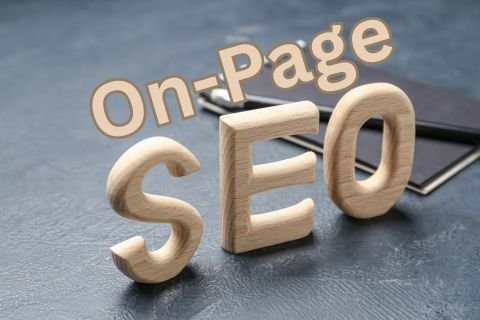Physical Address
304 North Cardinal St.
Dorchester Center, MA 02124
In today’s competitive digital landscape, mastering the art of On-page SEO is crucial for improving your website’s visibility and ranking on search engine result pages (SERPs). On-page SEO refers to the practice of optimizing individual web pages to enhance their performance in search engine rankings, and it encompasses various strategies aimed at improving user experience and aligning content with search engine algorithms.

Whether you’re a beginner or an experienced marketer, optimizing your website’s on-page elements is one of the most effective ways to boost traffic and increase organic rankings. This article provides essential On-page SEO techniques to help you refine your strategy and stay ahead of the competition.
On-page SEO involves optimizing the content and HTML elements of individual web pages so that they rank higher on search engines like Google, Bing, or Yahoo. Unlike off-page SEO, which focuses on external factors such as backlinks, on-page SEO gives you complete control over the improvements you make directly on your website.
From optimizing keywords to improving user engagement, On-page SEO optimization is the foundation of a well-rounded SEO strategy.
A well-executed on-page SEO strategy helps search engines understand the content on your website and its relevance to user queries. The better search engines comprehend the structure and content of your site, the more likely they are to rank it higher for related keywords. Additionally, on-page optimization improves user experience by providing a more organized, responsive, and engaging browsing experience.

Now, let’s dive into essential On-page SEO techniques that can help you enhance your website’s optimization.
Title tags are one of the most critical aspects of on-page SEO optimization. They provide both search engines and users with an understanding of the content of a page. An effective title tag should be concise, contain the primary keyword (such as “On-page SEO”), and give users a reason to click through to your site.
While meta descriptions may not directly influence rankings, they have a significant impact on click-through rates (CTR). A well-written meta description can persuade users to click on your link over others in the SERPs.
Header tags (H1, H2, H3, etc.) serve as the backbone for structuring your content. These tags provide a clear hierarchy for search engines to follow and break your content into digestible sections for users. Proper usage of header tags is essential for both on-page SEO optimization and user experience.

Content is the heart of on-page SEO. Without high-quality, relevant content, no amount of optimization will help you rank higher. Search engines prioritize content that is informative, engaging, and relevant to user queries. Incorporating your target keywords naturally into your content is essential for improving relevance and visibility.
A well-optimized URL helps both search engines and users understand the page’s content at a glance. Simple, clean URLs also contribute to better click-through rates and improved rankings.

Images are essential for user engagement, but they also contribute to on-page SEO when optimized properly. Search engines cannot “see” images; instead, they rely on alt text and file names to understand what an image represents. Optimizing these elements can significantly improve your page’s overall SEO.
Internal linking is a key on-page SEO technique that helps search engines discover your content and users navigate your site more efficiently. It also distributes link equity across different pages, helping them rank higher in the SERPs.
With more than half of global web traffic coming from mobile devices, mobile optimization is no longer optional—it’s essential. Search engines, particularly Google, prioritize mobile-friendly websites, and failure to optimize for mobile users can severely impact your rankings.
Website speed is a crucial ranking factor. If your pages take too long to load, users will leave, resulting in higher bounce rates and lower rankings. Search engines aim to deliver the best user experience, and fast-loading websites are a priority.
An On-page SEO checklist can help ensure that you don’t overlook any critical optimization steps. By following a structured checklist, you can streamline your optimization process and ensure that every page is fully optimized for search engines and users.
Mastering On-page SEO is essential for improving your website’s ranking, user experience, and overall performance. By focusing on critical elements like title tags, meta descriptions, header tags, and content, you can create a strong foundation for your SEO efforts. Implementing an on-page SEO checklist ensures that you consistently optimize every page for maximum impact.
Optimizing your website using the techniques outlined in this article can help you rank higher, attract more traffic, and provide a better experience for your visitors. Over time, these improvements will contribute to sustainable SEO success and long-term growth for your site. Hope this content may help you become an SEO freelancer.